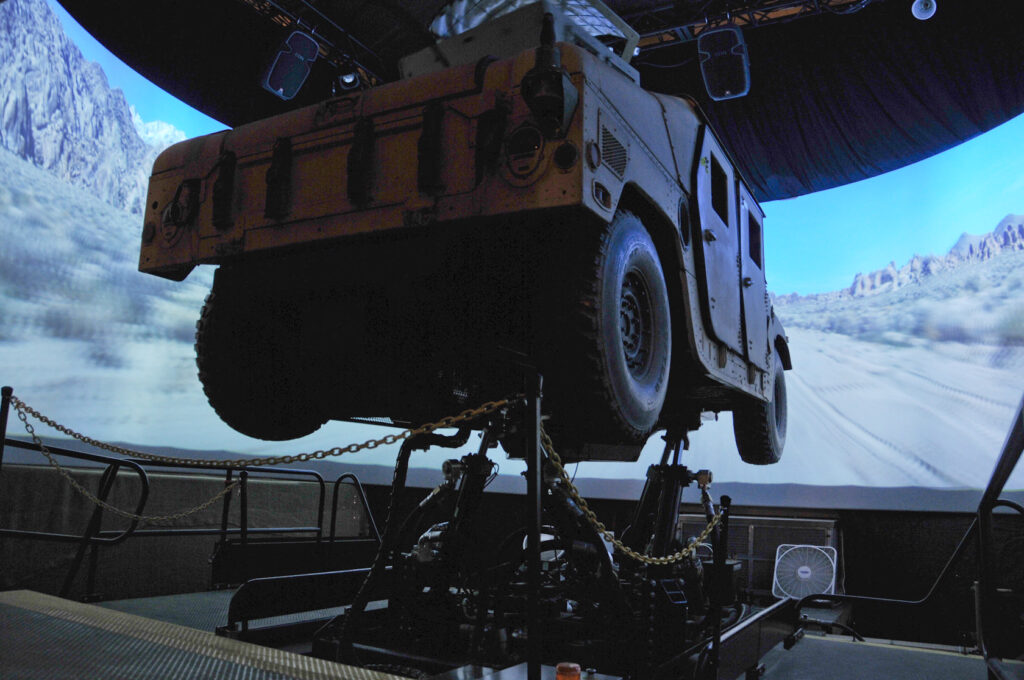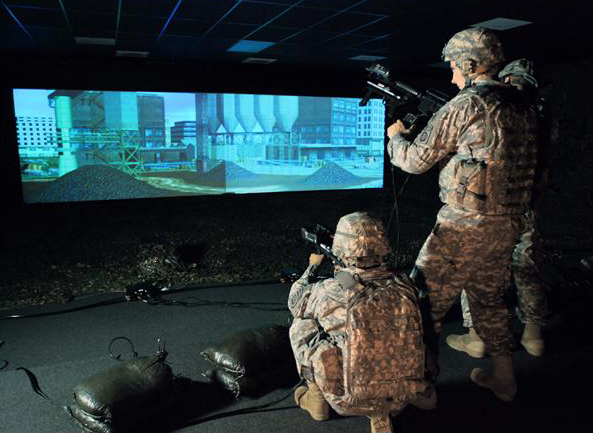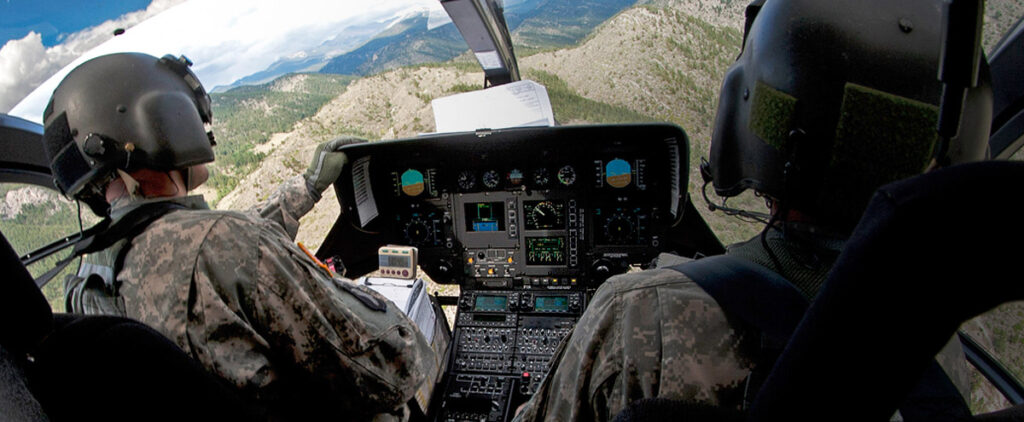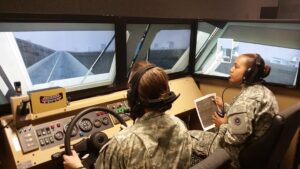By SYDNEY J. FREEDBERG JR.
 The first phase of the Synthetic Training Environment initiative replaces existing simulators for vehicles. The second phase aims to create — in just two years — something the Army’s never had before: an “immersive” virtual training environment for troops on foot. UPDATED Lockheed Wins Contract To Maintain 100+ Legacy Training Systems After years of toying with the technology, the Army is now racing to replace its clunky 1980s and ’90s-vintage training simulators with virtual reality, massive multiplayer networks and other innovations straight from the commercial gaming industry.
The first phase of the Synthetic Training Environment initiative replaces existing simulators for vehicles. The second phase aims to create — in just two years — something the Army’s never had before: an “immersive” virtual training environment for troops on foot. UPDATED Lockheed Wins Contract To Maintain 100+ Legacy Training Systems After years of toying with the technology, the Army is now racing to replace its clunky 1980s and ’90s-vintage training simulators with virtual reality, massive multiplayer networks and other innovations straight from the commercial gaming industry.
On March 5th, seven vendors started demonstrating new options for aircraft and ground vehicle simulators to Army experts, the two-star head of the effort says in an interview. A field test with combat troops is tentatively scheduled for July or August, Maj. Gen. Maria Gervais tells me. By fiscal year 2019 or “early” 2020, she says, the Army will have done enough testing to decide whether or not to buy the new simulators in bulk.
That’s a meteoric pace for any government IT procurement, let alone one by the Army, the largest and arguably most bureaucratic of the services. But that’s not all. While the first phase of the Synthetic Training Environment initiative replaces existing simulators for vehicles, the second phase aims to create — in just two years — something the Army’s never had before: an “immersive” virtual training environment for troops on foot.
Unlike vehicle crews, infantry can’t train by sitting in a box and interacting with screens. Close combat is intensely physical. Foot troops need to crawl, run, climb, and dive for cover, interacting with the real world and each other. So instead of virtual reality, the infantry squad trainer will use augmented reality: some kind of Google Glass-like heads-up display that lets the soldiers still see the physical environment all around them, but which can also superimpose digital obstacles, civilians, and even adversaries on the real terrain. (One defense official compared it to a militarized Pokémon Go).
Combining virtual reality and real reality this way lets troops train in a variety of scenarios no purely physical site could match. “If you have a MOUT (urban warfare) site at Fort Benning, you can go into it one time and you could be in Afghanistan,” Gervais says. “The next time you could be in Iraq.”

Army marksmanship simulator. Such systems can train specific tasks but not the highly physical skill set required for infantry combat.
High Priority
The infantry squad trainer in particular exists at the intersection of two powerful leaders’ agendas. Last October, Army Chief of Staff Gen. Mark Milley, created eight Cross Functional Teams to jumpstart long-stalled modernization. It brings together expertise historically scattered across the service in order. In parallel, this February, Defense Secretary Jim Mattis launched a Close Combat Lethality Task Force to improve the entire US infantry, with a particular focus on training simulations.
So while Maj. Gen. Gervais runs the Army’s Synthetic Training Environment CFT, she’s working closely with the service’s Soldier Lethality CFT, the SecDef’s Close Combat taskforce, the Marine Corps, and Special Operations Command. She’s also responsible for training simulators for every tank, aircraft and other system the other seven CFTs come up with. She keeps in close touch with them all through weekly video teleconferences.
Day to day, Gervais has Army special forces veterans and Marines on her team, along with conventional Army infantrymen, acquisition experts, software engineers, a representative of military intelligence, and (this being America) lawyers. That’s expertise that historically would have been scattered across multiple organizations and locations, cooperating in written exchanges that drag on for months or years.
With the Cross Functional Team approach, by contrast, “I get all the folks in the room,” Gervais says. “You have the discussions right then and there and are solving the problem.”

Army helicopter simulator
The Problem
Maj. Gen. Gervais and her team have a tough problem to solve, because the Army’s current mix of simulators is a mess. During the “training revolution” of the 1980s, the Army enthusiastically embraced what was then state of the art. Many of those simulators are still around, more than 30 years and 20 Moore’s Law cycles later.
UPDATE The scale and complexity is staggering. When Lockheed Martin announced today it had won a seven-year, $3.53 billion contract to sustain the Army’s existing training equipment, Lockheed exec Amy Gowder estimated they’d be responsible for 100 different major training systems, each with its unique and often incompatible software and spare parts. There are over 300,000 individual inventory items, from full-up simulators to protective gear for firing ranges, and 21 million piece parts.
Why so many? In most cases, each Army program — each vehicle, aircraft, and weapon — developed its own simulator to train troops on its own product, without much thought to how they might interact. But in actual battle, the tank crew or pilot that goes it alone is probably going to die. Realistic training requires working with other vehicles, and not just other vehicles of the same type, but with many types.
The current simulators aren’t set up for that. Getting them to work together requires cumbersome kludges, like deliberately slowing down the aviation simulator so it can work with the tank and Bradley simulators. Some aspects of combat just can’t be portrayed at all. The command and control software the Army uses to direct real battles, for example, generally doesn’t work in the virtual world of its simulators.
Then there’s the nightmare of terrain. When, increasingly anxious about Russian airpower, the Army tried to train its helicopter crews and anti-aircraft gunnerstogether, it turned out they weren’t in the same virtual world. On their screens, the pilots were flying nap of the earth and taking cover behind hills, the standard tactic. On anti-aircraft gunners’ screens, the hills didn’t exist and the helicopters were sitting ducks.
Army Reserve troops train to avoid and clear roadside bombs.
 All told, “we have 57 terrain formats that we’re trying to line up all the time,” Gervais says. So the new simulators new being demonstrated will use a single common standard, called One World Terrain: “With One World Terrain we believe we can quickly go down to 28 formats.” How long to get it down to one common terrain format for the entire Army? “Give me about a year and a half,” she offers.
All told, “we have 57 terrain formats that we’re trying to line up all the time,” Gervais says. So the new simulators new being demonstrated will use a single common standard, called One World Terrain: “With One World Terrain we believe we can quickly go down to 28 formats.” How long to get it down to one common terrain format for the entire Army? “Give me about a year and a half,” she offers.
It’s not just the virtual terrain that needs improvement. There have to be people in this brave new world as well. When troops train on most current simulators, “there’s no dogs, there’s no horse carts, there’s no people, so it’s a very sterile environment,” Gervais says. “That’s not what it looks like (in, say, Afghanistan). It’s very congested, you’ve got donkeys running across the road.”
As the Army focuses increasingly on urban warfare, the simulation problem becomes even more complex. “A megacity — we can create the buildings, but we’ve got to go in the buildings, we’ve got to go under the buildings, and we want that city to be alive,” she says, full of civilians and vehicles going about their day. “We’re working on the patterns of life and we’re starting to make a lot of progress.”
How much will all this cost? “We don’t have, since we just got started, a really solid estimate, but… I don’t think (it’s) approaching the billion (dollar level),” Gervais says. “As we’re working with the commercial virtual and gaming industry, those costs are going down.”
“I’ll have a much better cost estimate in the next year or two,” she says, “after I get done with these technology demonstrations and experiments.
No comments:
Post a Comment